Ke-Bang national park, Eco trail and Dark cave
Phong Nha Ke-Bang national park tour
Up early again, 8am this time, for day two of our Phong Nha farmstay adventure. Today we were taking the Phong Nha Ke-Bang national park tour, a trip Ben gives every other day. We were 17 strong; a motorbike, minibus and 1960s Ford jeep, and after breakfast we left in convoy. Sat in the back of the minibus, the same epic music played out. Bich sat upfront, and another farmstay staffer, Pete, an Aussie in a MAG t-shirt, manned the door, atop a cooler of beer. A couple of honeymooners, a six month long honeymoon no less, Dan and Fiz, sat next to us.
Violence in Phong Nha town
In Phong Nha town we paused for a pickup. While waiting a raucous formed across the road. Looking out the window I was alarmed to see two men running down the street, one chasing the other, brandishing high above his head an eight inch meat cleaver. We all collectively gasped as he threw it and narrowly missed the petrified man, and we held our breath as he continued to swipe at him, never quite making contact. Two brave locals intervened, and everything calmed down. “It cost me $50 to put that on for you”, Ben joked.
Minibus to the park
Loaded up, if not a little shaken, the convoy continued towards the national park. The limestone mountains grew up around us, thick with jungle foliage. Bich pointed out the sights; a house in town that scavenges for old bomb parts in the forest, they’d carry dangerous explosives for days, to sell on as scrap metal; ponds, scattered throughout the rice paddies, bomb craters from the American war.
The journey was supplemented with tales of Bich’s mum, a surviving volunteer that fought for Vietnam during the war. “The Americans would drop mines along this river to prevent the movement of supplies”, we were told, “and after each drop a couple of them would run down the river with a string of floating barrels, the barrels triggered the mines and cleared the river for supplies”.
The park isn’t strictly open to tourism, getting in by yourself isn’t possible. We were allowed in as we were with locals, locals that knew the park’s restrictions on where you can and can’t go. A route through the park is still heavily maintained for military purposes, the old Ho Chi Minh trail.
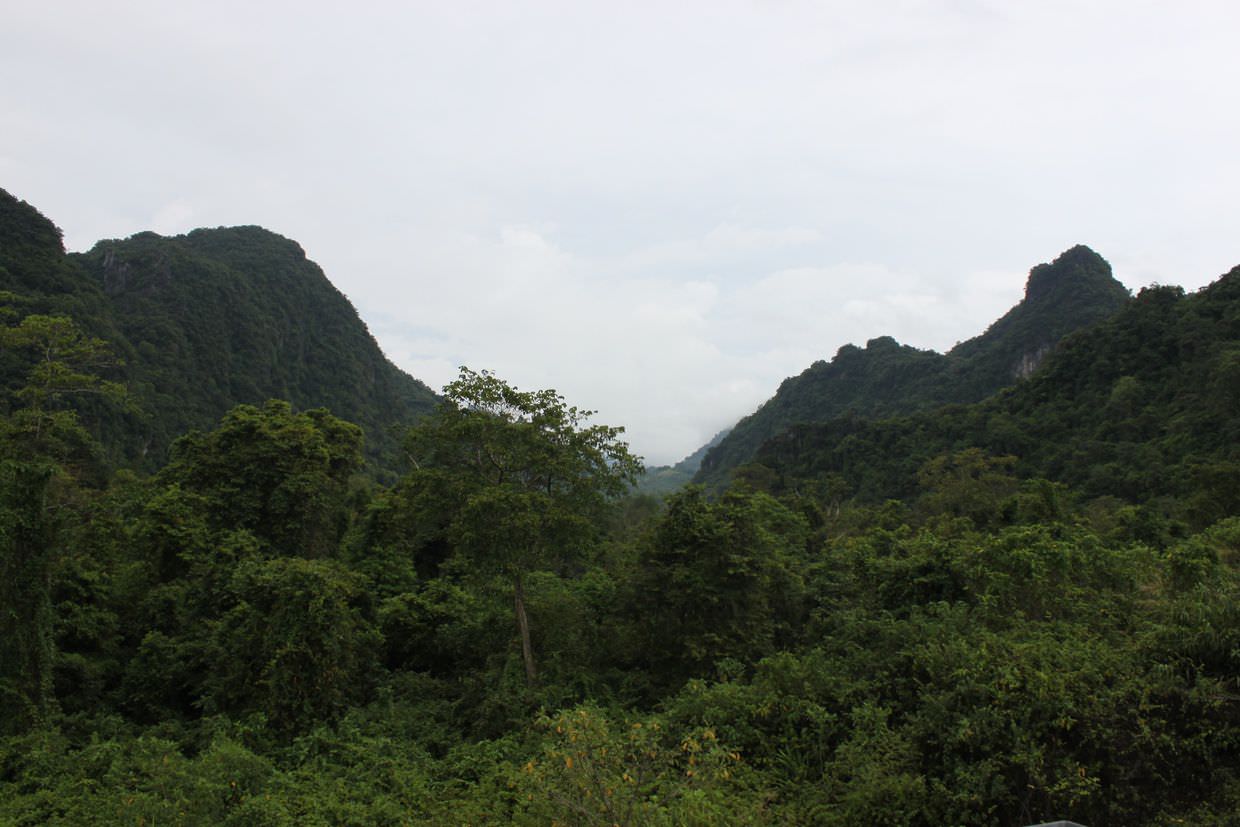
Park by Jeep
On a hill we marvelled at the beautiful park. Thin layers of low hanging cloud danced amongst the limestone karsts, eerie and magnificent. Ben explained how the rocks were formed, being eroded by fresh water many millennia ago, and listed the known wildlife in the area — bears, apes, and recently tigers, spotted by British cave expedition groups. Spooked by the appearance of another tour group (Oxalis, a group Ben had helped setup), we moved on. Sam and I jumped in the jeep, held on to the metal frame and rumbled around the former gravel roads of the park.
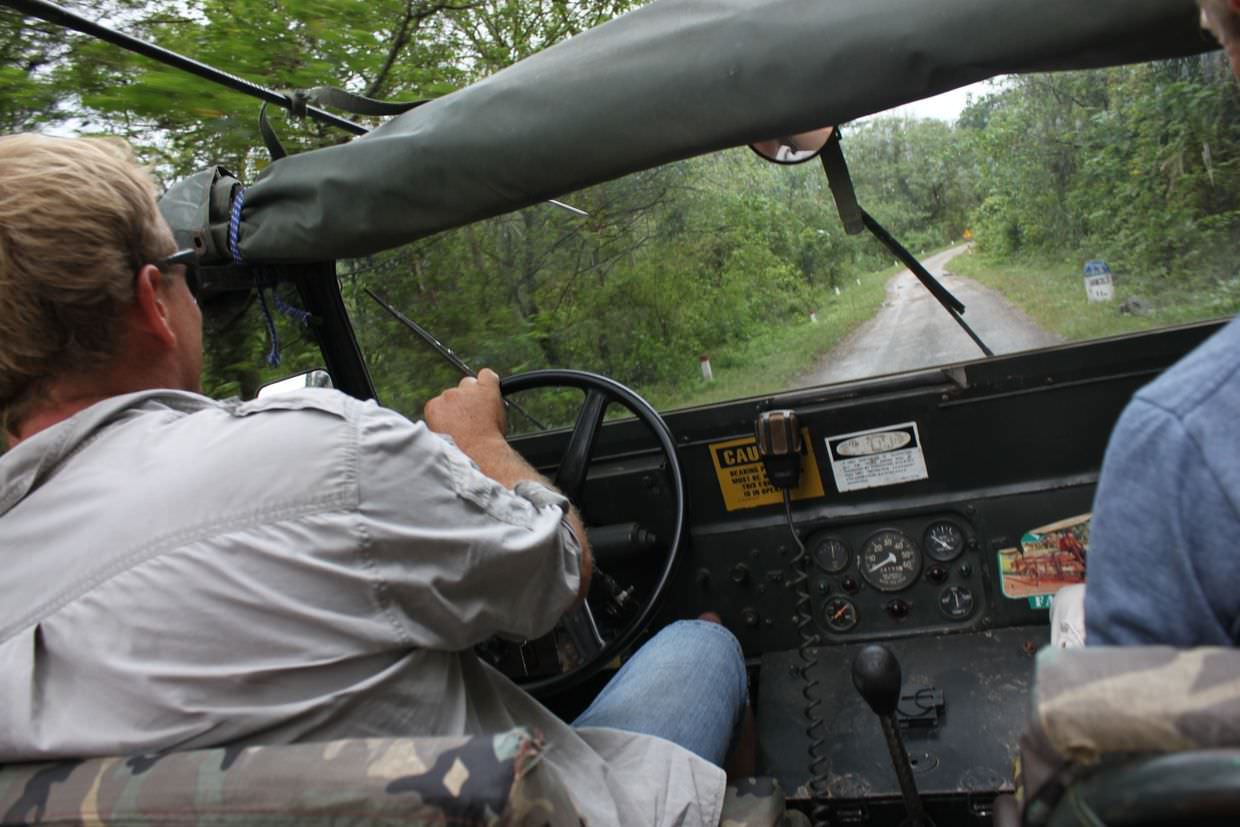
Next stop, an intersection, with restricted roads that connect north and south, again with wondrous views. Back to the jeep and onwards, Bob Dylan screeching from the stereo, as the convoy’s classic motorbike races by. Another war story: “The Americans used to blast the sides of these mountains, causing rocks to block the road”, making it impassable for Vietnamese supplies — “the Vietnamese solution was to throw man power at the problem”; Ben slowed down and pointed out a small cave where volunteers had lived and hid, after each attack they’d come out and clear up the rocks.
Not famously known for being part of the war, this area was still pivotal, one of Vietnam’s thinnest points, in some places only 40km across. Recently Bich’s mum had met a former pilot that had flown through these mountains, and they’d worked out that on one particular day she’d been shooting at him. The tactics of each side were explained to us; he flew through the valley, drawing gun fire so a B52 bomb route could be plotted. The Vietnamese knew this, and sacrificed gun positions to plot the route, thereby knowing where the bomber would be and how to attack it.
Temple of eight ladies
Next stop was the temple of eight ladies, or eight martyrs. Here eight women had lived in a cave which was badly bombed, the entrance became blocked, trapping them inside. For days people tried to get air and supplies to those trapped, but they perished. Now there is a shrine and temple dedicated to them where Vietnamese also pay their respects to the war dead.
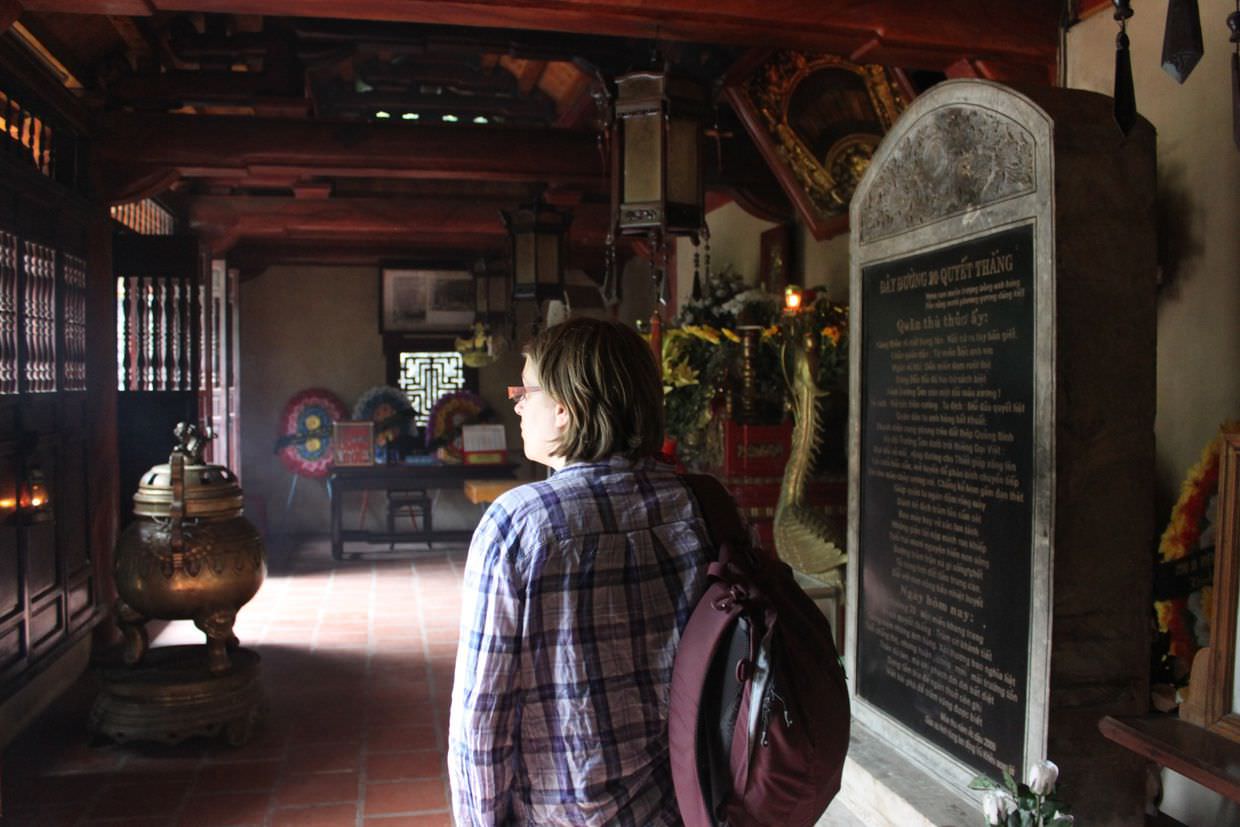
In this region Kin ancestor worship is popular, a belief in a spirit world filled with good and bad spirits and with traditions that involve burning paper items to give to their relations in the spirit world. At the temple the inside altar dedication is for the spirits you wish to be associated with, on the outside those you don’t — inside first, outside second. In an unlit corner an exhibit showed items girls fighting in the war would’ve carried; a toothbrush, comb, the famous Ho Chi Minh sandals made from old car tyres.
Unexploded ordinance
Outside, Ben continued the tour; in the surrounding areas there remains huge amounts of unexploded ordinance. Many of the bombs dropped were designed for WW2, and for dropping over Germany, they relied on the correct altitude to arm themselves, spinning X number of times. In Vietnam, especially in this area, the altitude varies significantly and the humid climate interfered with the systems — leaving swathes of unarmed, partially armed, undetonated bombs scattered throughout the jungle. The locals refer to some of the devices as “pineapples”, they’re yellow and look like fruit, kids find them, play with them and disaster ensues. MAG (Mines Advisory Group) operate to find and disarm these devices but it’s a mammoth task that shan’t ever be completed.
The ingenuity of the Vietnamese fighting the Americans was on show again. This time, hung up outside the temple, was an old bomb shell being used as a bell. “The Vietnamese would line the mountains with these”, and using a code they could quickly communicate. Unlike American radios they weren’t subject to the wet, and if they were bombed you’d just string them back up again.
Paradise Cave (again)
Paradise Cave was next, the cave we hiked through the day prior. More Jurassic park jeeps, “there’s a goat strung up just along there”, Ben noted. Up the steep slope we trekked, again in the rain, and into the cave. Even though it was our second time, it was wondrous, an incredible place. We wandered slowly, taking it all in, and used the tripod to capture shots of us. At the end of the boardwalk we stood for a few moments, in the damp echoey chamber by ourselves. Wasn’t yesterday incredible?
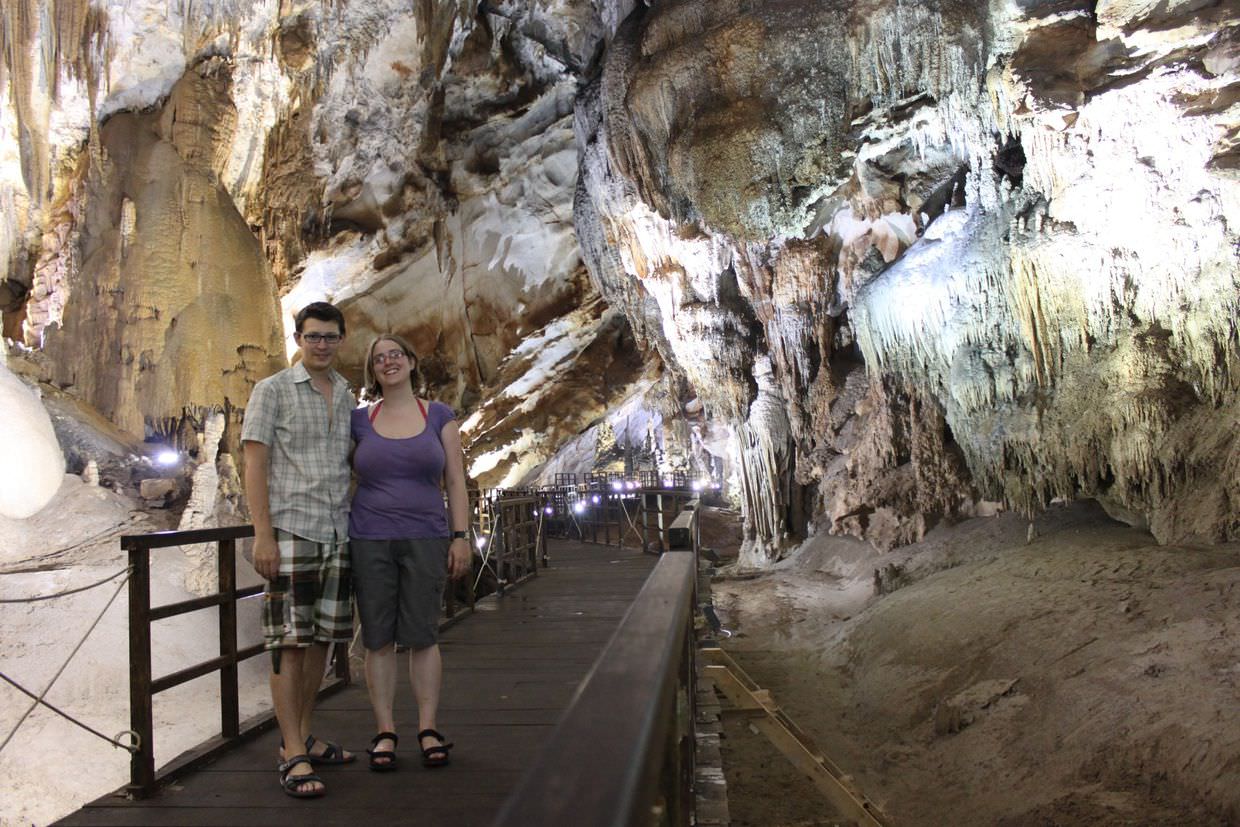
Lunch break outside the cave gave the mosquitoes the opportunity they needed to bite me, twenty times or so. I must’ve been the tastiest.
Eco trail
Back in the jeep, “All along the watchtower” playing, “come and take my earth”, we rumbled down to a German built Eco trail. A misty, serene forest split by the most gorgeous turquoise river you’d ever see; like a scene from a movie. In single file we crossed the river on an old bamboo bridge, rotten parts occasionally snapping and falling off.
“Everyone got their swimmies?”, one after another we jumped into the river and swam to the other side. As a guy that doesn’t really do swimming, I didn’t fancy the strong river current, even with a life jacket. Ben and I took the kayak and beers, handing out cans of 333 to everyone. Beyond the trail lies a sink hole that feeds the river, huge volumes of water are pumped up from nearby caves.
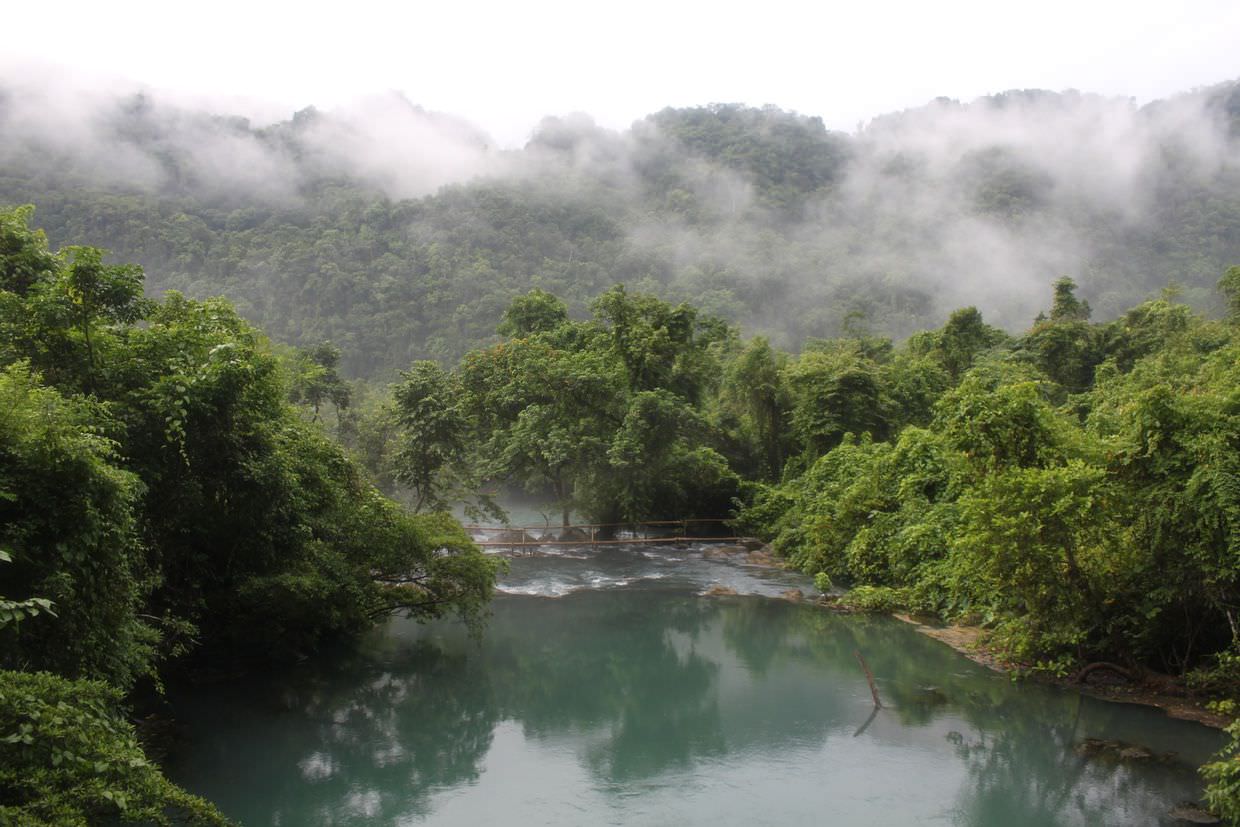
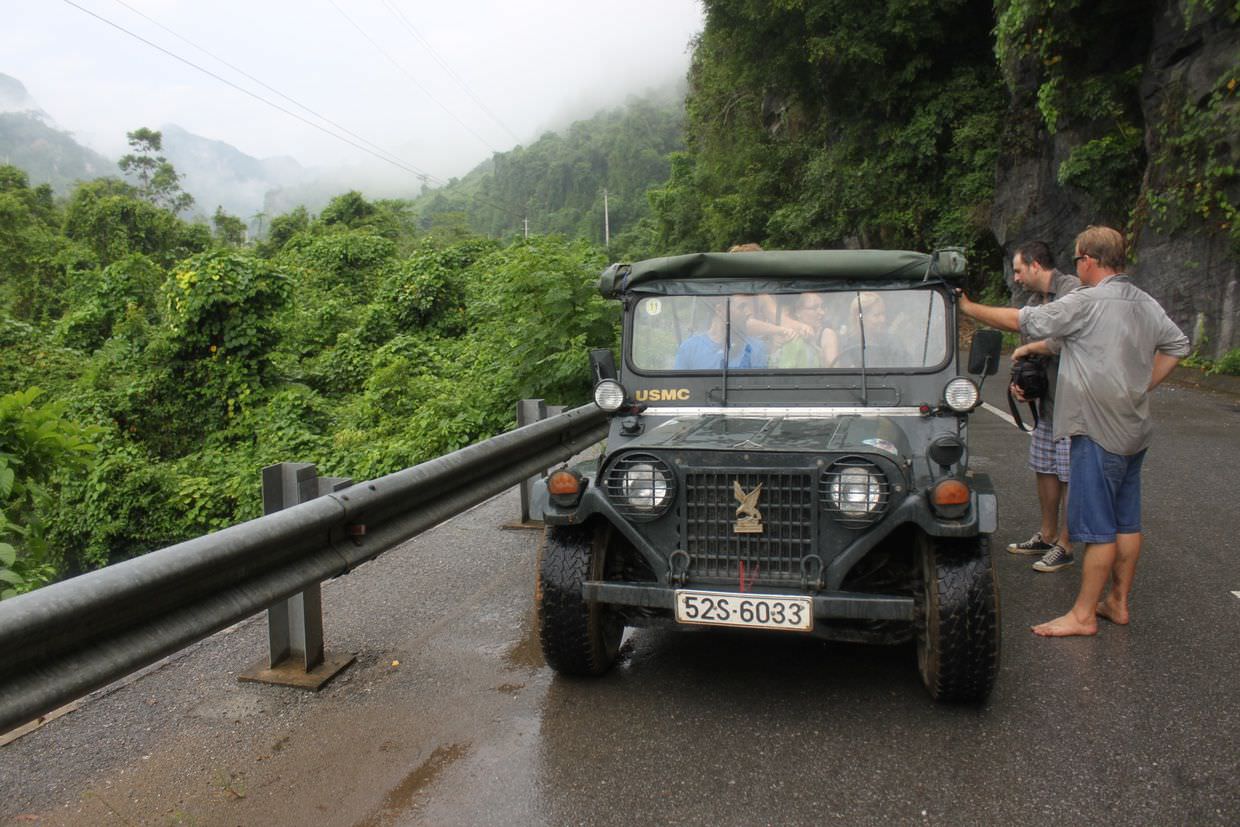
Dark Cave
We continue by minivan to where we swum yesterday, only this time we jump into kayaks and head downstream to the entrance of the “Dark Cave”. The way I’ve written that gives the impression Sam and I are expert kayakers, in actuality we did many 360 degree spins and mostly made it by allowing the current to take us there. Although this time we did manage to avoid a domestic. The guides in the nearby boat laughed at us, and gave us the occasional prod in the right direction.
At the cave entrance we head in by foot, a newly built boardwalk, but it soon ends. And to the surprise of the tour; if you’re taking this tour, perhaps you’ve found this article via Google, you might want to look away now. With the end of the boardwalk, and us all in swimwear, lifejackets and with bonus headlamp, we begin to swim into the cave. A stream of orange fluorescent bodies swimming into the darkness, huge caverns towering above us, the sound of flitting bats echoing throughout the chambers. The light slowly fades, and soon all you see are the bobbing lamps of the swimmers.
As a poor swimmer, I swam with Ben, who also carried Bich on his back. We probably swam about 500m into the cave, ducking under the occasional rocky outcrop and following a narrow channel. At the end was a sandy bay where we gathered and turned off our headlamps. (Have you discerned that we really enjoy standing in pitch black?). “So this is the Dark Cave”, Ben jokes, although he points out its probably named after the razor sharp black basalt rock that lines the cave. He goes on to explain how the tide is a few hours out of sync with outside, and highlights the varieties of sub species found in these caves: funky pale crickets, centipedes and snakes included. “What are you doing Bich?”, she’s turned her headlamp on and is playing with the sand, “Looking for snakes,” she replies.
On the way out we angle our headlamps to the roof, Sam swims on her back for the best views. Another enormous magnificent cave that we feel privileged to have seen. In the Kayak again we were much improved, and didn’t arrive last. A round of chilled canned beer and back to the farmstay, with one final stop on the bridge for a photo opportunity. Not to mention a family of water buffalo freaking out in the road.
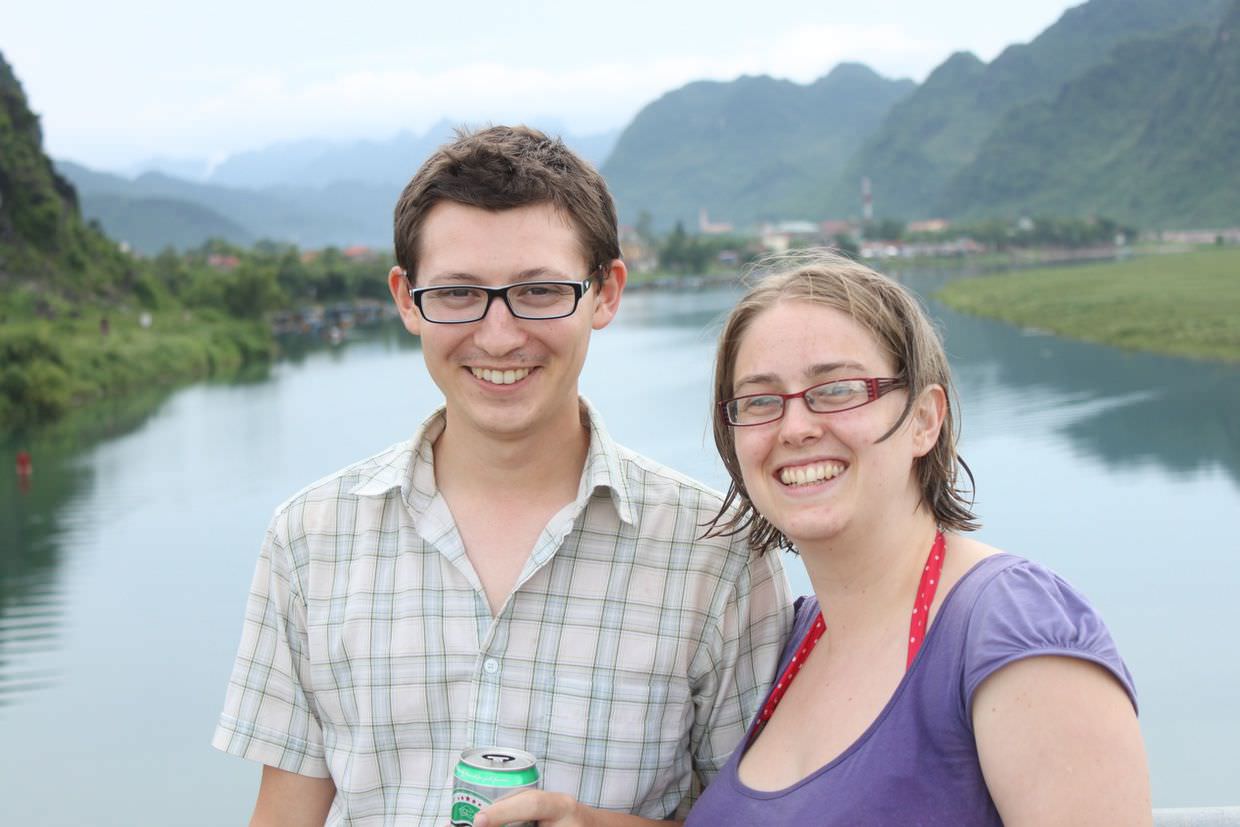

Popcorn and cocktails
At the farmstay freshly popped pop corn waited for us, with a free cocktail. The sun was setting over the mountains and rice paddies again; you couldn’t grow tired of this view. With Dan and Fiz we ate dinner (some of the best Pho we ate in Vietnam) outside, talking about onward plans, Hue, and passing around Sam’s Vietnamese hat for photo opps. The Thai singer, she’d been on the tour with us, played again tonight, though the farmstay was quieter. Looking around, one last time, this place is really quite wonderful.
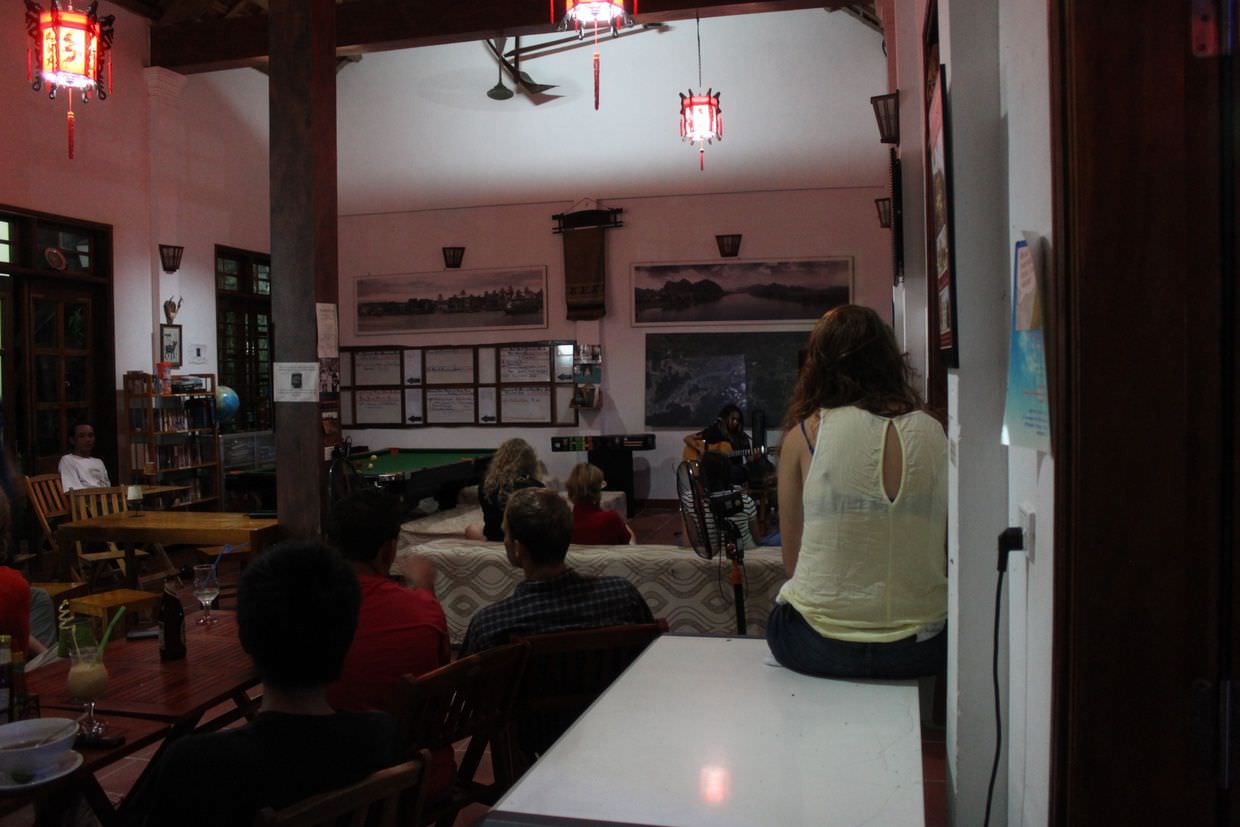
Sleeper train to Hanoi
And then it was time to leave, though we didn’t want to go; checked out, bags packed, leaky shampoo cleaned up, we said our goodbyes and jumped aboard our ride to the station, via an epic thunderstorm. Slowing to a crawl, we drove through bucketing rain, amongst dazzling skylines, around huge puddles and the occasional suicidal toad to Dong Hoi station.
Six of us were taking the overnight train to Hanoi. A small, sweaty cabin with fake wooden decor, we shoved our bags under the lower bunks and bedded down on the hard mattresses. Our Phong Nha adventure was over, two of the most exciting and epic days I’ve ever witnessed, and without doubt the highlight of our trip. Magical.